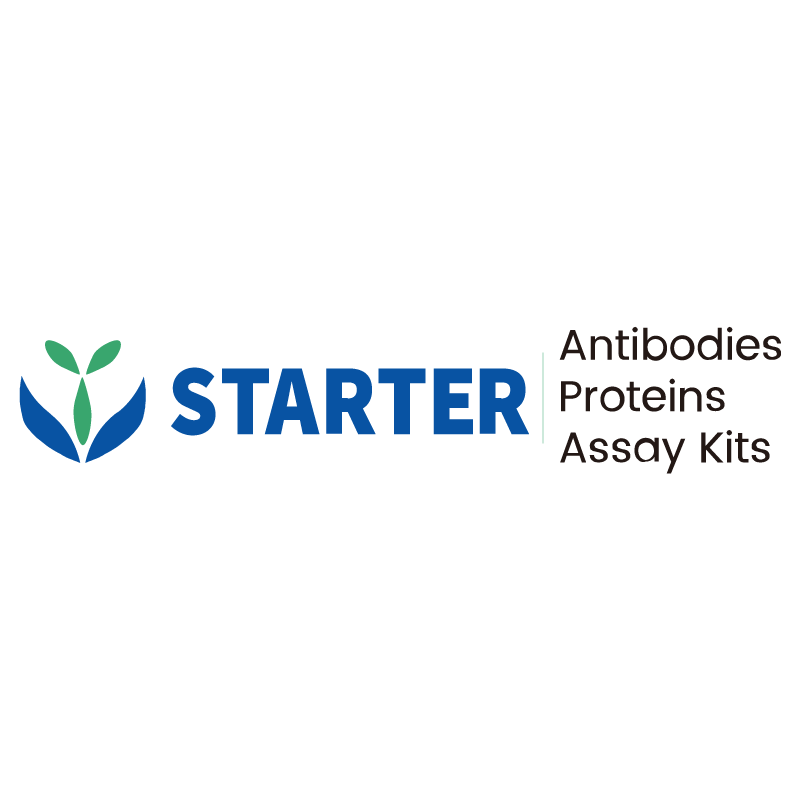WB result of TACC3 Recombinant Rabbit mAb
Primary antibody: TACC3 Recombinant Rabbit mAb at 1/1000 dilution
Lane 1: RPMI-8226 whole cell lysate 20 µg
Lane 2: HeLa whole cell lysate 20 µg
Lane 3: Raji whole cell lysate 20 µg
Lane 4: Ramos whole cell lysate 20 µg
Secondary antibody: Goat Anti-rabbit IgG, (H+L), HRP conjugated at 1/10000 dilution
Predicted MW: 90 kDa
Observed MW: 120 kDa
Product Details
Product Details
Product Specification
| Host | Rabbit |
| Antigen | TACC3 |
| Synonyms | Transforming acidic coiled-coil-containing protein 3; ERIC-1; ERIC1 |
| Immunogen | Synthetic Peptide |
| Location | Cytoplasm, Cytoskeleton |
| Accession | Q9Y6A5 |
| Clone Number | S-3048-50 |
| Antibody Type | Recombinant mAb |
| Isotype | IgG |
| Application | WB, IHC-P, ICC |
| Reactivity | Hu, Ms, Rt |
| Positive Sample | RPMI-8226, HeLa, Raji, Ramos, mouse testis, rat testis |
| Purification | Protein A |
| Concentration | 0.5 mg/ml |
| Conjugation | Unconjugated |
| Physical Appearance | Liquid |
| Storage Buffer | PBS, 40% Glycerol, 0.05% BSA, 0.03% Proclin 300 |
| Stability & Storage | 12 months from date of receipt / reconstitution, -20 °C as supplied |
Dilution
| application | dilution | species |
| WB | 1:1000 | Hu, Ms, Rt |
| IHC-P | 1:1000 | Hu, Ms, Rt |
| ICC | 1:500 | Hu |
Background
TACC3 (Transforming Acidic Coiled-Coil Containing Protein 3) is a centrosomal and microtubule-associated protein essential for bipolar spindle assembly and chromosome segregation during mitosis and meiosis. It stabilizes microtubules by forming a complex with ch-TOG (CKAP5) and clathrin, promoting kinetochore-microtubule attachments and preventing spindle multipolarity. TACC3 is frequently overexpressed or involved in oncogenic fusions like FGFR3-TACC3 in various cancers, including bladder, pancreatic, and colorectal cancers, where it drives proliferation, immune evasion, and chemoresistance. Its overexpression disrupts DNA damage response pathways and sensitizes cells to PARP inhibitors, while its depletion induces mitotic catastrophe and cell cycle arrest, making it a promising therapeutic target in oncology.
Picture
Picture
Western Blot
WB result of TACC3 Recombinant Rabbit mAb
Primary antibody: TACC3 Recombinant Rabbit mAb at 1/1000 dilution
Lane 1: mouse testis lysate 20 µg
Secondary antibody: Goat Anti-rabbit IgG, (H+L), HRP conjugated at 1/10000 dilution
Predicted MW: 90 kDa
Observed MW: 110 kDa
WB result of TACC3 Recombinant Rabbit mAb
Primary antibody: TACC3 Recombinant Rabbit mAb at 1/1000 dilution
Lane 1: rat testis lysate 20 µg
Secondary antibody: Goat Anti-rabbit IgG, (H+L), HRP conjugated at 1/10000 dilution
Predicted MW: 90 kDa
Observed MW: 100 kDa
Immunohistochemistry
IHC shows positive staining in paraffin-embedded human colon. Anti-TACC3 antibody was used at 1/1000 dilution, followed by a HRP Polymer for Mouse & Rabbit IgG (ready to use). Counterstained with hematoxylin. Heat mediated antigen retrieval with Tris/EDTA buffer pH9.0 was performed before commencing with IHC staining protocol.
IHC shows positive staining in paraffin-embedded human testis. Anti-TACC3 antibody was used at 1/1000 dilution, followed by a HRP Polymer for Mouse & Rabbit IgG (ready to use). Counterstained with hematoxylin. Heat mediated antigen retrieval with Tris/EDTA buffer pH9.0 was performed before commencing with IHC staining protocol.
IHC shows positive staining in paraffin-embedded human tonsil. Anti-TACC3 antibody was used at 1/1000 dilution, followed by a HRP Polymer for Mouse & Rabbit IgG (ready to use). Counterstained with hematoxylin. Heat mediated antigen retrieval with Tris/EDTA buffer pH9.0 was performed before commencing with IHC staining protocol.
IHC shows positive staining in paraffin-embedded human colon cancer. Anti-TACC3 antibody was used at 1/1000 dilution, followed by a HRP Polymer for Mouse & Rabbit IgG (ready to use). Counterstained with hematoxylin. Heat mediated antigen retrieval with Tris/EDTA buffer pH9.0 was performed before commencing with IHC staining protocol.
IHC shows positive staining in paraffin-embedded human ovarian cancer. Anti-TACC3 antibody was used at 1/1000 dilution, followed by a HRP Polymer for Mouse & Rabbit IgG (ready to use). Counterstained with hematoxylin. Heat mediated antigen retrieval with Tris/EDTA buffer pH9.0 was performed before commencing with IHC staining protocol.
IHC shows positive staining in paraffin-embedded human gastric cancer. Anti-TACC3 antibody was used at 1/1000 dilution, followed by a HRP Polymer for Mouse & Rabbit IgG (ready to use). Counterstained with hematoxylin. Heat mediated antigen retrieval with Tris/EDTA buffer pH9.0 was performed before commencing with IHC staining protocol.
IHC shows positive staining in paraffin-embedded mouse testis. Anti-TACC3 antibody was used at 1/1000 dilution, followed by a HRP Polymer for Mouse & Rabbit IgG (ready to use). Counterstained with hematoxylin. Heat mediated antigen retrieval with Tris/EDTA buffer pH9.0 was performed before commencing with IHC staining protocol.
IHC shows positive staining in paraffin-embedded rat testis. Anti-TACC3 antibody was used at 1/1000 dilution, followed by a HRP Polymer for Mouse & Rabbit IgG (ready to use). Counterstained with hematoxylin. Heat mediated antigen retrieval with Tris/EDTA buffer pH9.0 was performed before commencing with IHC staining protocol.
Immunocytochemistry
ICC shows positive staining in Ramos cells. Anti-TACC3 antibody was used at 1/500 dilution (Green) and incubated overnight at 4°C. Goat polyclonal Antibody to Rabbit IgG - H&L (Alexa Fluor® 488) was used as secondary antibody at 1/1000 dilution. The cells were fixed with 4% PFA and permeabilized with 0.1% PBS-Triton X-100. Nuclei were counterstained with DAPI (Blue). Counterstain with tubulin (Red).


